Grand Designs at Herculaneum
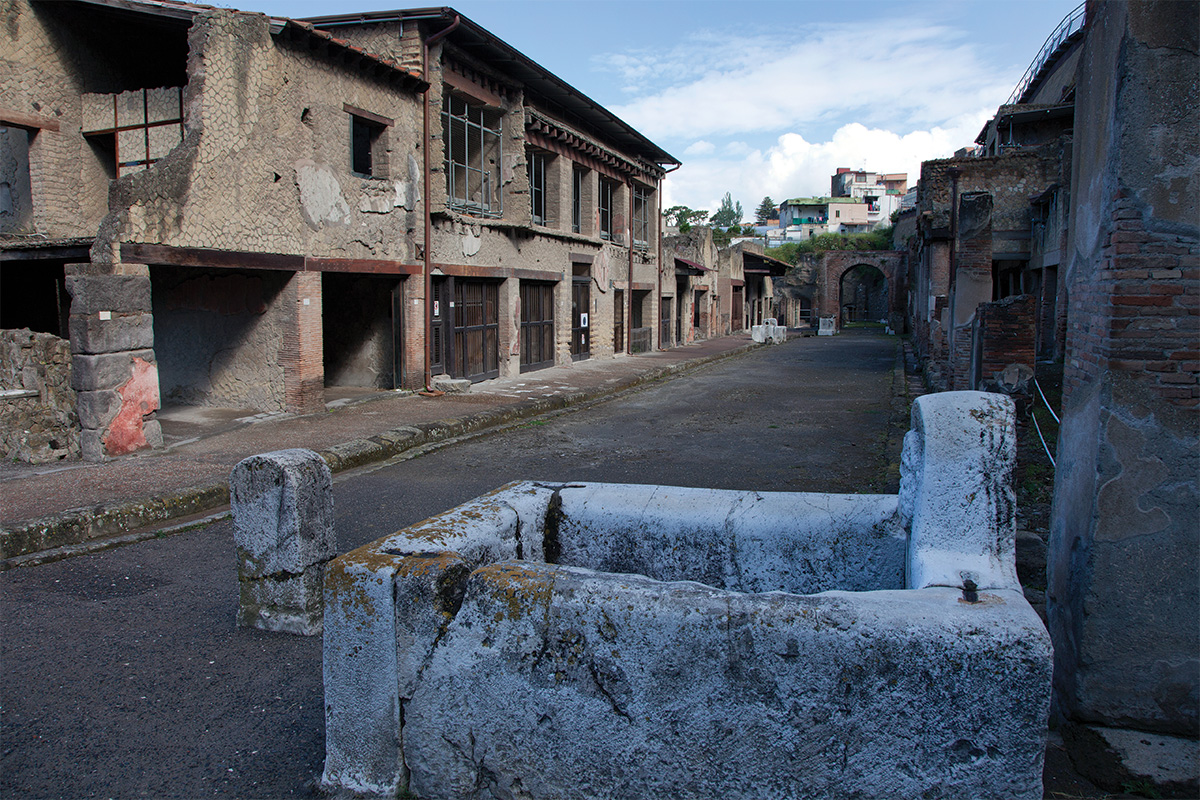
One of the most lavish dwellings in Roman Herculaneum, the House of the Bicentenary reopened to the public in 2019 after decades of conservation efforts. Francesco Sirano, Director of the Parco Archeologico di Ercolano, and Leslie Rainer from the Getty Conservation Institute tell the story of this magnificent house, its discovery, its decline, and how it has been brought to life once more.
Visitors stepping through the open doors of the House of the Bicentenary in 1938, to great celebration, were part of a 200-year-old tradition of exploring Herculaneum that started with the ancient city’s official rediscovery in 1738. Similarly, those who walk around the newly reopened Roman townhouse today can gain insights into its discovery, excavation, and conservation.
Standing atop Vesuvius in the present day, looking out over the Bay of Naples, the archaeological site is just visible at the foot of the mountain. It is easy to see that Herculaneum lies directly in the path of any eruption flowing down the volcano’s slopes to the sea. This is exactly what happened in AD 79, with waves of boiling hot gas and avalanches of volcanic material surging down, completely covering the Roman town. By the time the disaster was over, Herculaneum lay 30m underground and the shoreline had been pushed 500m out into the sea.
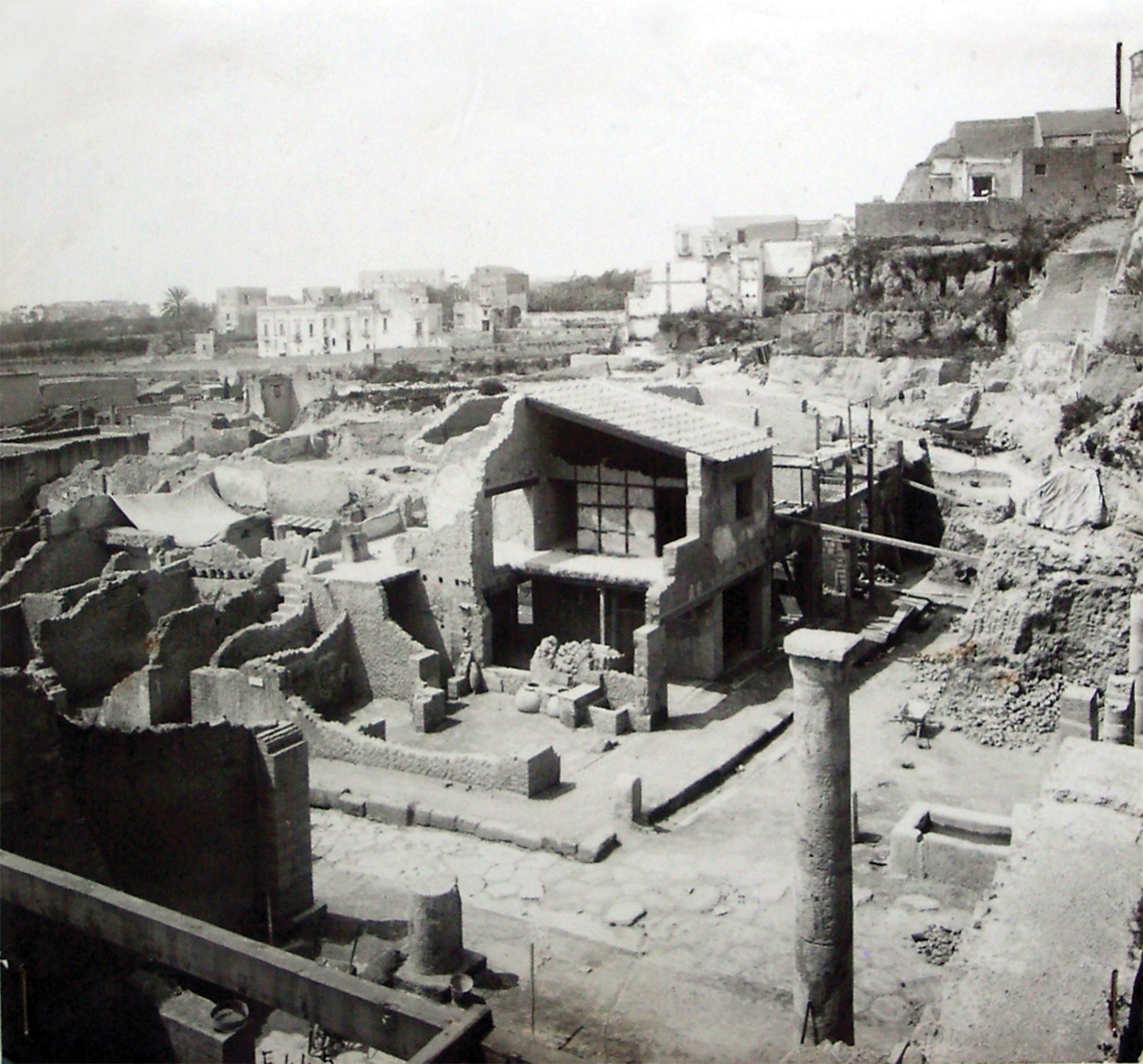
IMAGE: Historical Archives of the Soprintendenza Pompei, Maiuri, C2766
By contrast, the larger archaeological site of Pompeii lies landward, to the south of Vesuvius, and in AD 79, during the early phases of the eruption, it was not affected by the destructive volcanic surges. Instead, a tall cloud column that reached the stratosphere rose from Vesuvius, and a prevailing wind carried the lighter airborne volcanic particles in the direction of Pompeii, so the streets and buildings were covered in a heavy rain of ash and pumice stones.
These differences are part of what sets the two towns apart for archaeologists: the lighter material covering Pompeii makes it significantly easier to excavate in comparison to the thick layer of what hardened into tuff over Herculaneum. In addition, while both Roman towns had a wealth of public buildings and private residences, those at Herculaneum were sealed by the rock, allowing the exceptional preservation not only of the brick and mortar of the town’s buildings, but also the more ephemeral organic materials: loaves of bread, sliding doors, tables and stools, and even a baby’s cradle. Pompeii impresses for the extent of the surviving city; Herculaneum amazes with its detail.

IMAGE: © Parco Archeologico di Ercolano
When systematic explorations of buried Herculaneum started in 1738, under the Bourbon king Charles, they were carried out by tunnelling down to the Roman city, mapping it, and extracting artworks. Much of the stunning collection of Roman wall-paintings, mosaics, and objects in the National Archaeological Museum in Naples comes from this period. It was fortunate that the House of the Bicentenary was largely untouched by the tunnellers, so that, when open-air excavations were first properly organised in the early 20th century, it was found almost entirely intact.
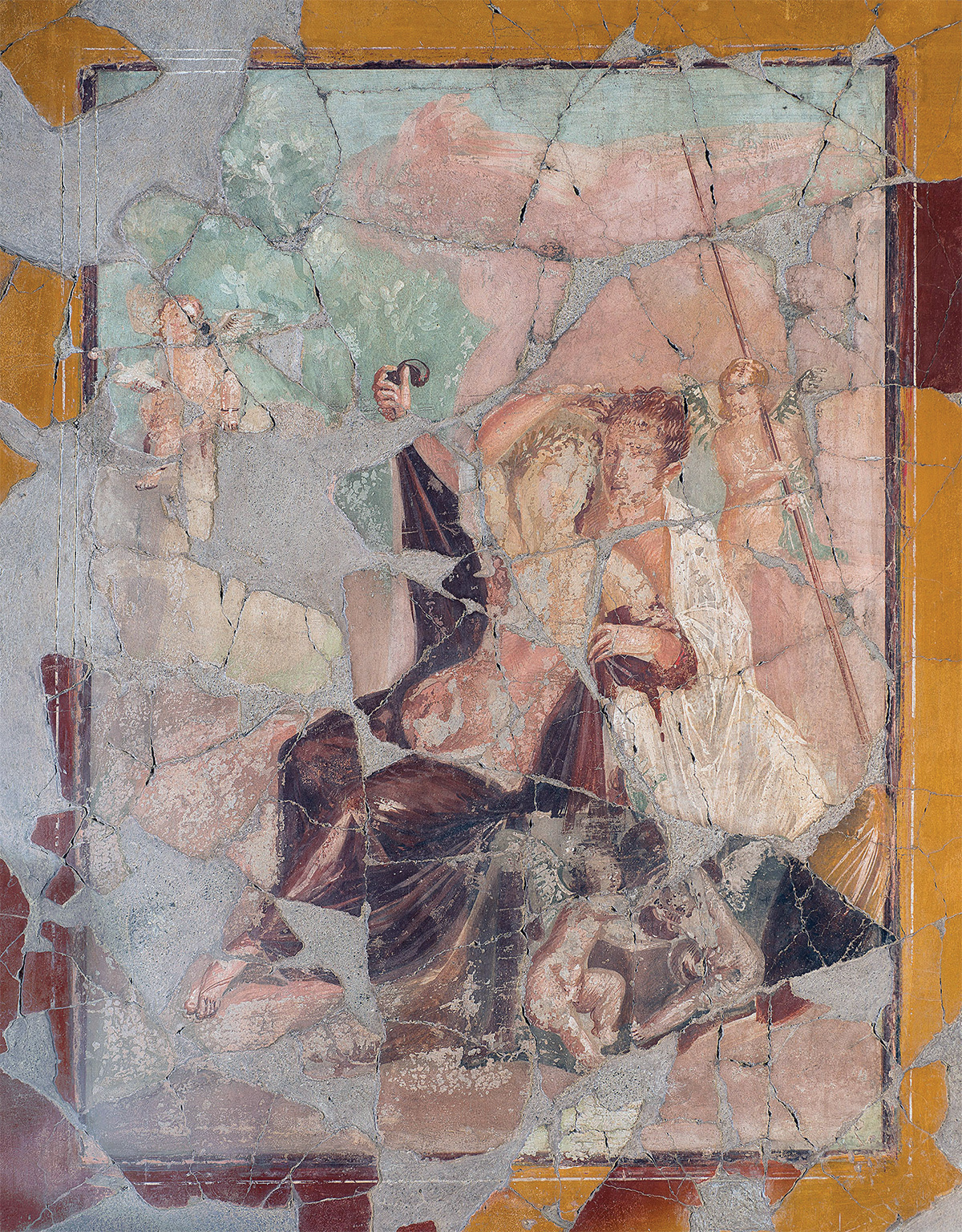
IMAGE: Laura Eboli © J Paul Getty Trust with permission of Parco Archeologico di Ercolano
The archaeological site that can be visited today is largely a product of those 20th-century excavations, which were launched and carried out during the Fascist period, as part of the Mussolini government’s love affair with all things Roman. The funding for this massive decades-long campaign may have been guaranteed thanks to political will, but this should not take away from the extraordinary achievements of Amedeo Maiuri, the archaeologist who uncovered Herculaneum’s streets and houses, and his sizeable team of diggers, masons, and restorers, who worked with new technologies, including pneumatic drills, a small railway, and other mechanised tools.
By 1937, when that team reached the Decumanus Maximus, the main Roman road through the town, they had gained a decade’s experience of how to peel back the volcanic rock from the fragile ancient structures and reveal their contents. They were ready to expose the façades of the houses that gave on to the main road and then, as their showpiece for the 1938 celebrations, they chose to excavate and open to the public what would become known as the House of the Bicentenary. This period marked the peak of Maiuri’s approach: his team excavated the house, propping up the damaged walls, underpinning them where necessary, adding a new roof structure covered with Roman tiles to protect the interior, restoring the decorated floors and walls, and displaying in situ original objects that had been found during excavation.
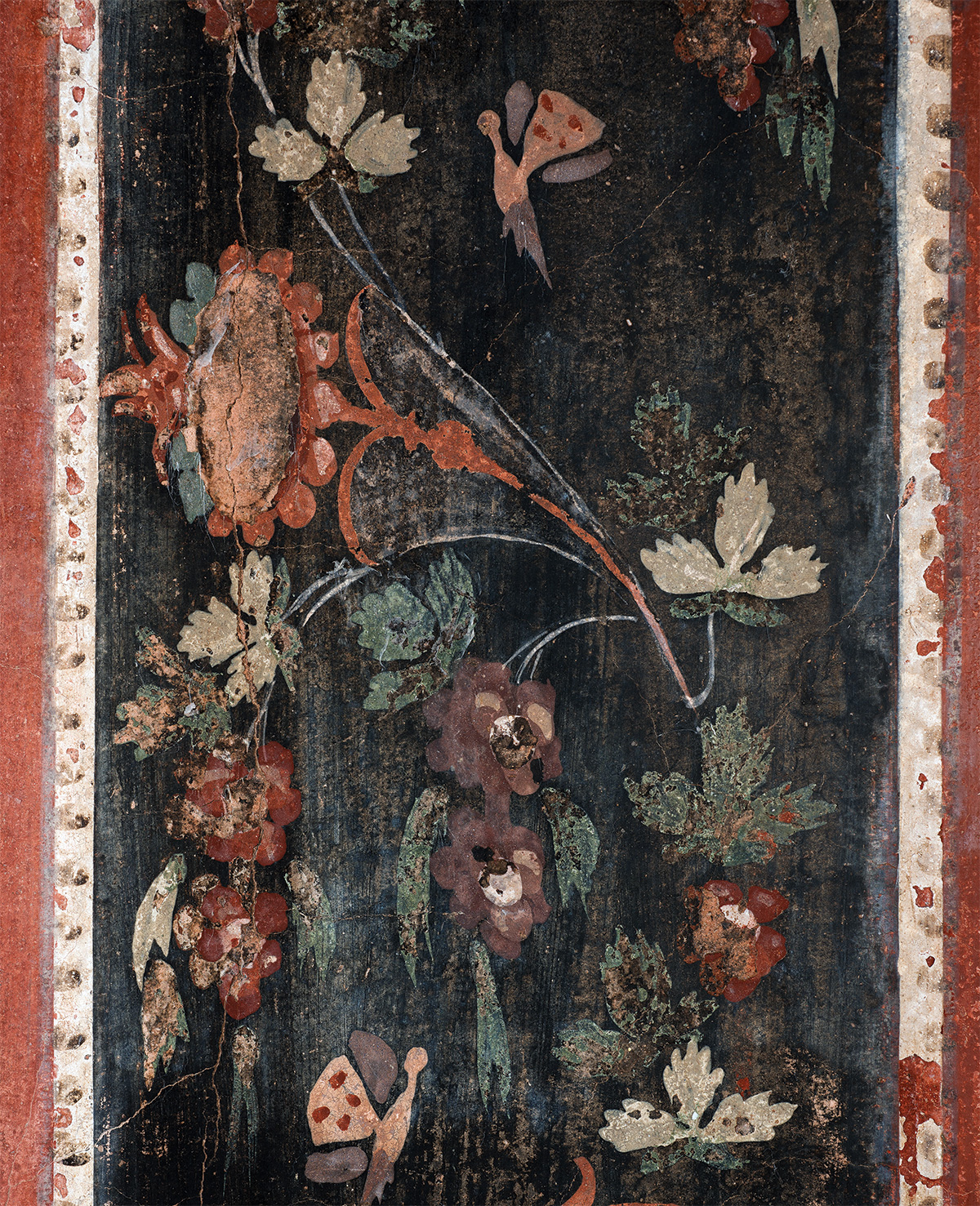
IMAGE: Laura Eboli © J Paul Getty Trust with permission of Parco Archeologico di Ercolano
The House of the Bicentenary is still one of the jewels of the site. Maiuri described it as a sumptuous noble house of elegant proportions. It is one of Herculaneum’s largest townhouses, as would be expected for a property with such a prominent location on the main street of the town, close to the theatre, the law courts, and the forum. The stately 1st-century BC house was built on two storeys and its façade was decorated with a brightly coloured green-and-red chequerboard pattern, with a balcony looking over the street. Inside, a large atrium with a central marble pool led to an elegant room for receiving guests. Both were covered with lavish mosaic pavements and wall-paintings, all indicating that this was a noble house that belonged at some point to prosperous owners. Archaeologists have also noted, however, signs of changes in the form of rooms blocked off along the front of the house to create shops, low-quality repairs to a refined but damaged wall-painting, and an independent apartment created on the upper storey, signs that the house changed with its owners’ needs over time.
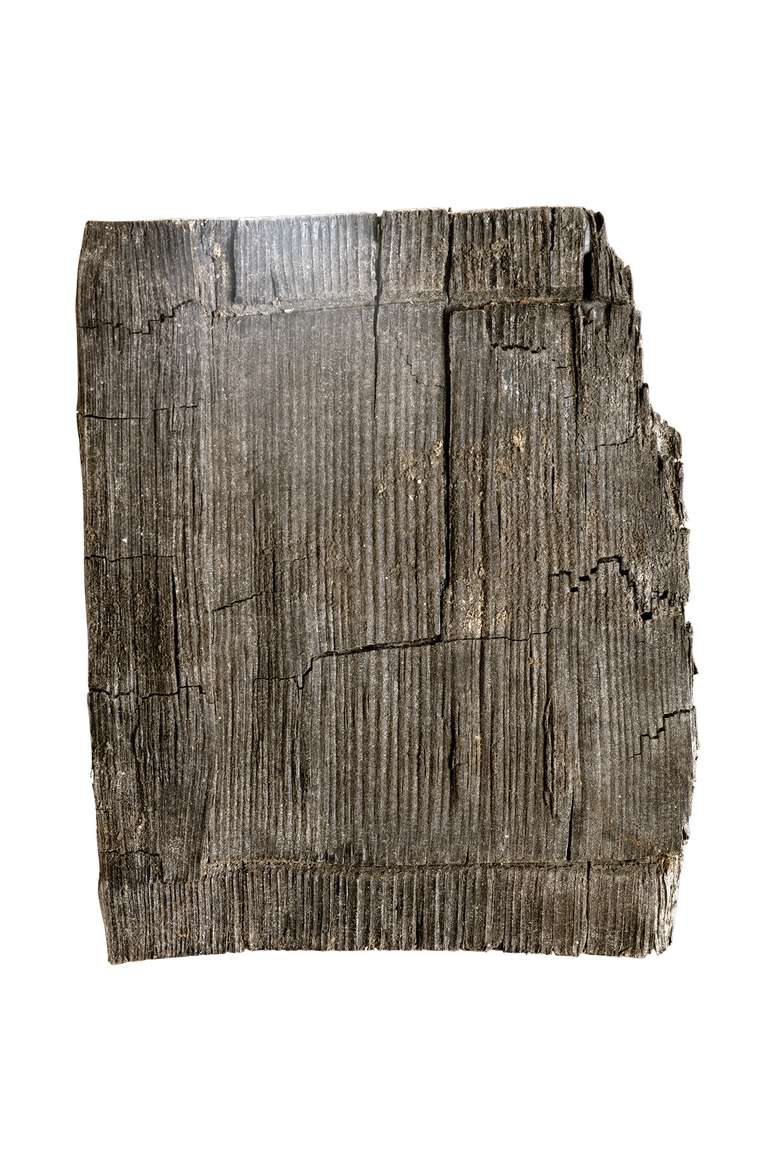
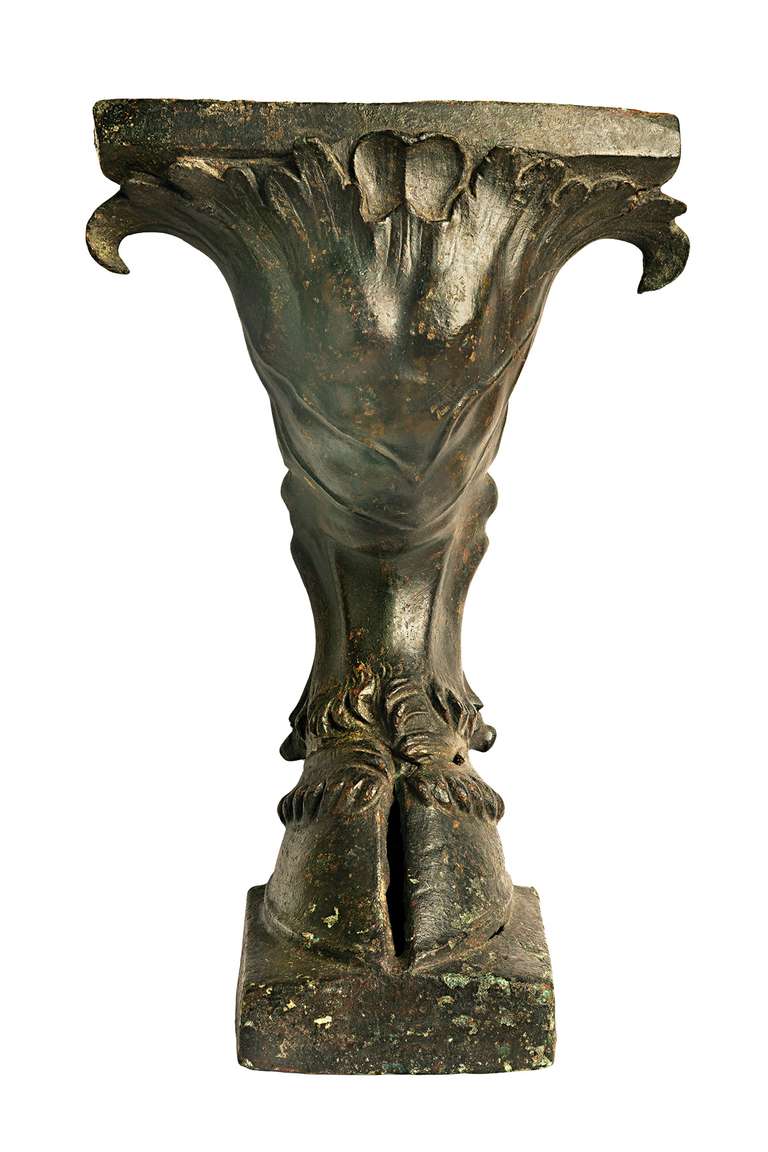
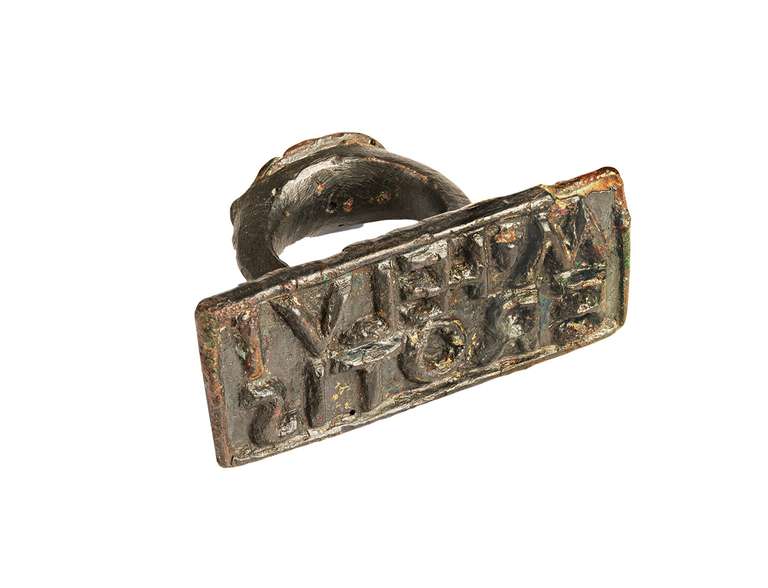
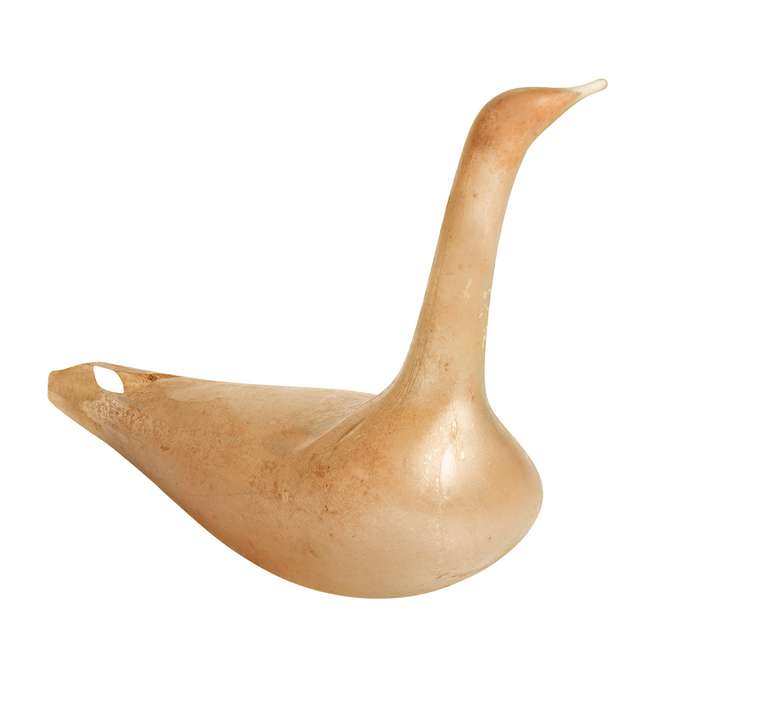
One of the most richly decorated rooms of the house was the private reception room, known as a tablinum, which would have had views on to an enclosed garden. Guests of the house’s owner would have enjoyed two striking painted mythological scenes, flanked by roundels with satyrs, maenads, and bacchantes within a flamboyant red, yellow, and black decorative scheme. Even the floor was highly decorated, with a central area of coloured marble tiles, including vivid red and yellow stones, surrounded by a patterned black-and-white mosaic.
At the time of excavation, numerous objects were found in the house revealing the daily use of these spaces. They ranged from the everyday to the unique, and included bronze statuettes, a signet ring, kitchen items and terracotta lamps, and, perhaps most notably, a remarkable set of wax tablets found in a chest that describe the legal case of an individual named Petronia Iusta, who was the daughter of a slave and whose free status was in question. Archaeologists surmised that the case most likely involved the owners and servants, named in the tablets, who lived in this house. On the basis of this evidence, the house probably belonged to the family of Gaius Petronius Stephanus and his wife, Calatoria Themis, some of whom had played key roles in the local administration. The tablets are an excellent example of the type of intimate detail found in Herculaneum, where all types of materials were preserved in the volcanic stone.
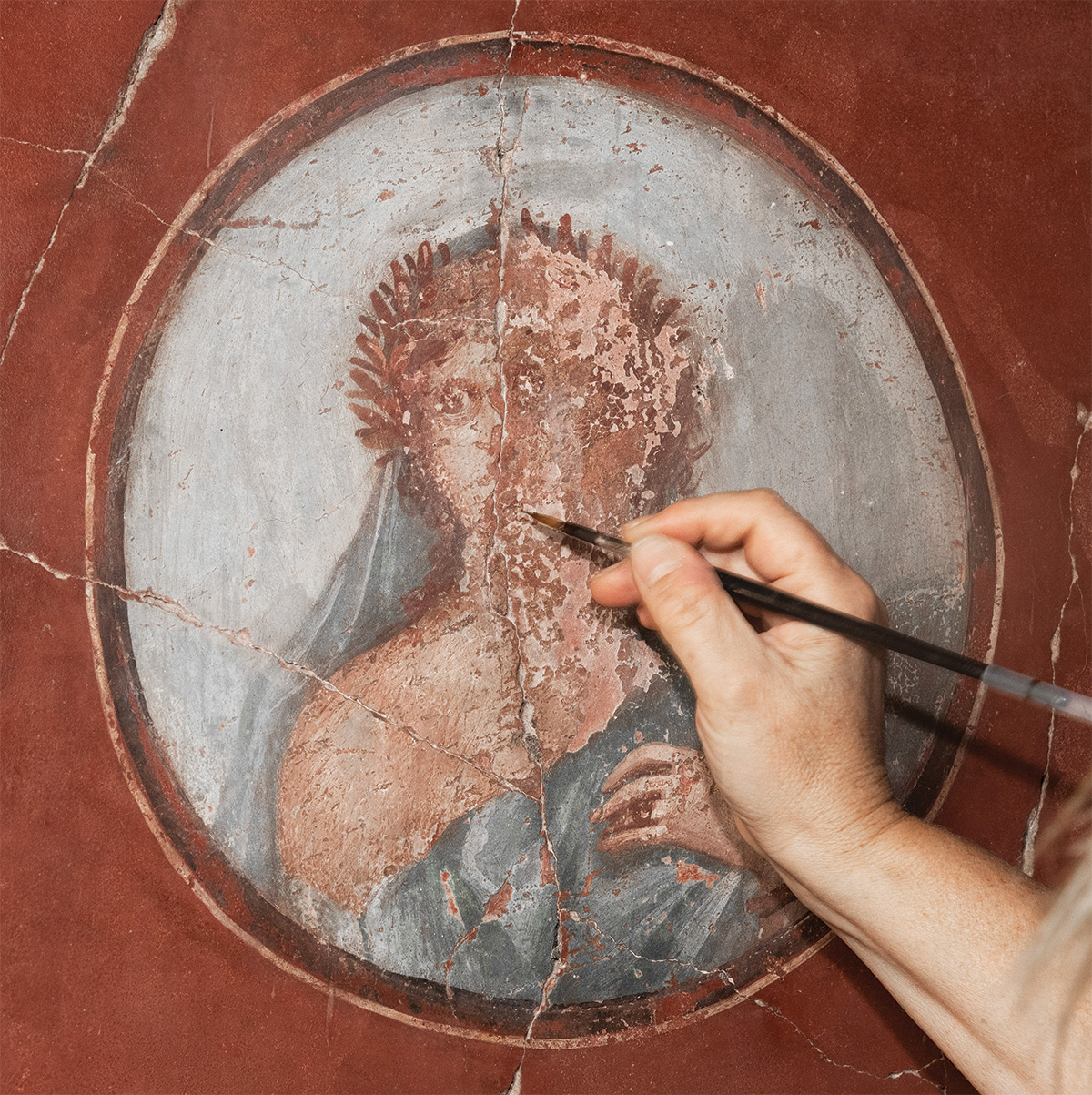
IMAGE: Araldo De Luca © J Paul Getty Trust with permission of Parco Archeologico di Ercolano
Not long after the House of the Bicentenary had been restored and opened to the public, the onset of the Second World War halted excavation at Herculaneum. Over the course of the following years, the large workforce that looked after the site dwindled and resources for maintenance became scarce. After the war, Maiuri continued to fight for funding for Herculaneum, but the situation worsened after his retirement, and with the post-war economic crisis in Italy, the site, including the House of the Bicentenary, fell into disrepair. A portion of the roof of the House of the Bicentenary collapsed, other parts began to leak. In time, the risk of other unattended structural issues led to the house being closed to the public in 1983, less than 50 years after its spectacular discovery. Once closed, with a lack of regular attention and maintenance, the Roman house and its architectural features suffered further. Parts of the structure of the upper levels became unstable, while rainwater and poor drainage damaged the wall paintings and the mosaic pavements.
The tide turned, however, in the early years of the 21st century, when a partnership was formed between the Italian heritage authorities and a philanthropic foundation, the Packard Humanities Institute. Together they created the Herculaneum Conservation Project, which brought the support of a multidisciplinary team of Italian heritage specialists and works contractors to the ancient town, who then began to address pressing issues across the site. Their active presence on site throughout the year meant they could support the local heritage authority and reverse the trend of spiralling decay, but also create favourable conditions for wider partnerships and new research. Very quickly, the presence of international teams of scientists, conservators, and other expertise became a common sight at Herculaneum.
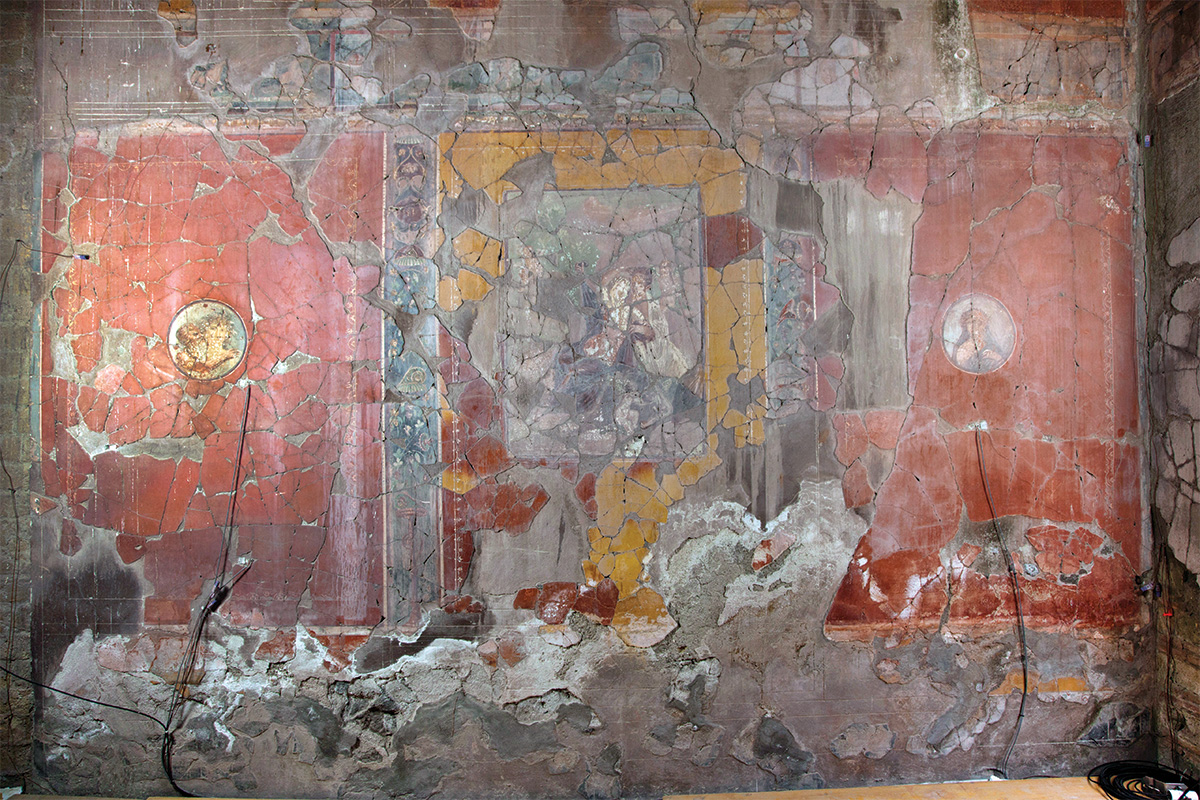
IMAGE: Scott Warren © J Paul Getty Trust with permission of Parco Archeologico di Ercolano
The House of the Bicentenary was identified early on as one of the buildings most in need of attention. Plans had long been drawn up for its complete restoration, but there had never been the funding for such an extensive project. In 2011, Getty Conservation Institute, in collaboration with the Italian heritage authorities and the Herculaneum Conservation Project, launched a pilot project to study and conserve the decorated architectural surfaces of the tablinum, given the significance of the wall-paintings and mosaic pavement in that room and their serious deterioration. The research carried out, the methods developed, and the materials employed in this focused field project were also developed to serve as a guide for the conservation of wall-paintings and mosaic pavements elsewhere at the site and in the region.
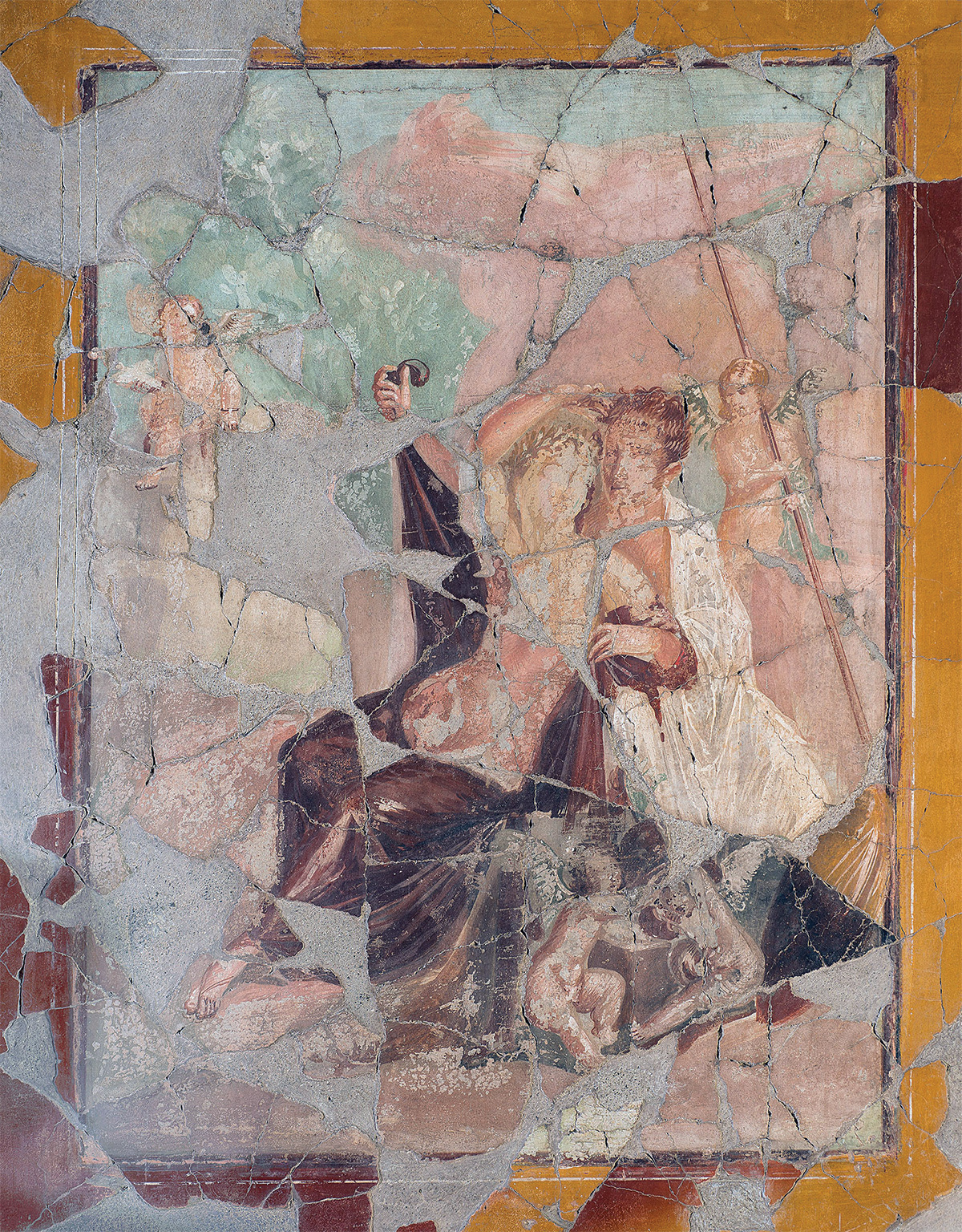
IMAGE: Laura Eboli © J Paul Getty Trust with permission of Parco Archeologico di Ercolano
Studies of the paintings have shed light on how the reception room, destroyed and discoloured by the volcanic eruption, would once have appeared. The central scene painted on the east wall – showing Mars and Venus in an amorous embrace, with Cupid figures around them – illustrates the effects of the eruption. It was, along with much of the tablinum, recomposed from fragments found in the fill of the excavation. The yellow background of the painting has, in some places, converted to red. This is a phenomenon that occurs at high temperatures, when yellow ochre is calcined to red ochre. Some fragments would have preserved their original yellow colour, and others would have converted to red with exposure to high temperatures as elements of the building burned. For this reason, the tablinum still shows patches of yellow on the east wall, whereas the background colour of the west wall is entirely red. Scientific investigations carried out by the team showed that the scheme in the room originally would have had alternating panels with red and yellow backgrounds along the central portion of the wall, and a yellow background along the top, altering the colour scheme of the room dramatically.
In parallel with the conservation project for the tablinum, the Herculaneum Conservation Project team revised plans for the conservation of the entire house, implementing them with the heritage authority as resources became available. Indeed, from 2010 to 2019, roofs were repaired, drainage was redirected, unstable partition walls on the upper storey of the house were stabilised, and wall-paintings and the mosaic pavement in the atrium of the house began to be treated.
Herculaneum, and in particular the House of the Bicentenary, can now be viewed as a living laboratory for developing innovative conservation methods and materials, and for rethinking the approach to conservation in the context of the 20th-century excavation and restorations, now themselves considered historic. This process has been much enhanced by the creation of the Parco Archeologico di Ercolano, a dedicated heritage authority that only looks after Herculaneum. Working together with the Herculaneum Conservation Project, Getty Conservation Institute and other partners, new projects are being initiated, events at the site are being programmed, and maintenance and conservation are being planned.
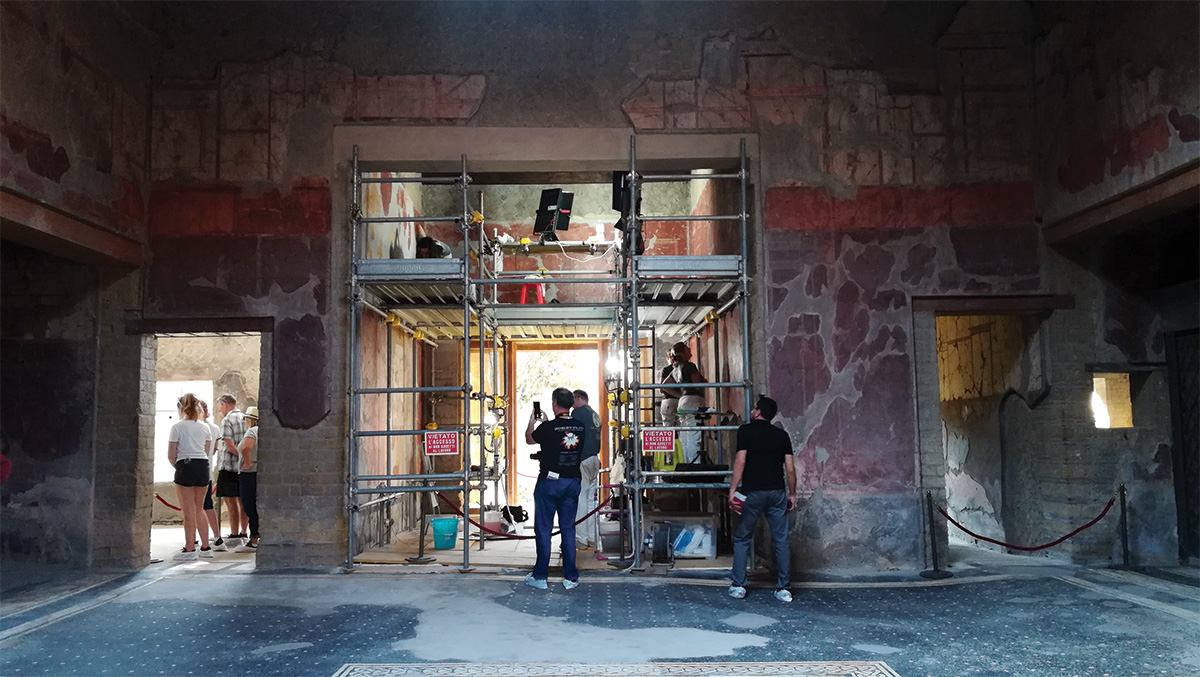
IMAGE: © Parco Archeologico di Ercolano
A new chapter in the life of the House of the Bicentenary began in 2019, when the conservation work had made it safe to reopen the site to the public. The challenge now turns to the continuous care of the house so that the problems of the past do not recur – regular maintenance may not sound the most exciting issue in archaeology, but it is precisely what will ensure the survival of these remarkable sites long into the future.
The House of the Bicentenary is a reminder of the importance of reopening closed buildings, both to provide public access to these spaces, and to ensure that they are monitored and cared for on a regular basis. In parallel to providing access to the house again, a participatory project has been under way to monitor the flow of visitors through the building, given the fragile mosaic pavements and the tight spaces covered with delicate wall-paintings, and reduce any damage they might potentially cause. For example, visitors have been given shoe covers to reduce their impact when walking over the original Roman pavements to explore the house. At the same time, the mosaic floors are periodically laser-scanned to measure changes and to inform future plans for both conservation and public access.
All these efforts apply not only to the House of the Bicentenary but to all the 40 Roman buildings that are currently being cared for at Herculaneum. Visitors are even able to see behind the scenes of the conservation work that is being done to return these special places to full public access. In this way, not only the heritage specialists but also members of the public are involved in the conservation, helping to build a shared and enriched understanding of Herculaneum’s cultural values.
Further Information
Herculaneum is normally open to visitors every day except Tuesday from 8.30am to 5pm. (As we go to press, Herculaneum is temporarily closed as part of Italy’s COVID-19 measures.) From 15 March 2021, the summer opening times come into force, extending the closing time to 7.30pm. The House of the Bicentenary is open for you to explore when you visit. Details are provided on the official website at https://ercolano.beniculturali.it
A new book from Getty Publications provides a vivid account
of the Roman town of Herculaneum, using the House of the Bicentenary as a case study to help understand the site’s long history, exploration, and conservation: Sarah Court and Leslie Rainer, Herculaneum and the House of the Bicentenary: history and heritage (price $29.95, ISBN 978-1606066287).
The authors are grateful to their many colleagues, whose dedication and valuable contributions to the study and conservation of the House of the Bicentenary, and the site of Herculaneum in general, have been the key to the progress described in this feature. These include, among others, the staff of the Parco Archeologicodi Ercolano and the twin authority for Pompeii, and the teams of specialists behind the significant results that partnerships with the Packard Humanities Institute and the Getty Conservation Institute have delivered. Special thanks to Sarah Court for her contributions to this feature.
